Lieutenant Governor Manoj Sinha’s Russia visit turns cultural diplomacy into a spiritual pilgrimage.
By Ajaz Rashid
Lieutenant Governor Manoj Sinha’s recent journey to Russia to bring back the sacred relics of Lord Buddha stands as a remarkable episode weaving threads of spiritual, diplomatic, and cultural renewal across continents. The week-long exposition in Kalmykia, Russia, became not just a showcase of treasured artifacts, but a moment echoing India’s soft power, shared spiritual heritage, and the enduring global legacy of the Buddha’s message.
A Path of Devotion
On October 11, 2025, a special Indian Air Force aircraft touched down in Elista, the capital city of Kalmykia, bringing with it the holy relics of Lord Buddha—the Piprahwa (Kapilvastu) relics, recognized as a National Treasure of India. These precious relics, originally enshrined at the National Museum in New Delhi, began a new chapter of international spiritual exchange, marked by devotion and cultural ceremony.
Leading the Indian delegation was Jammu and Kashmir Lieutenant Governor Manoj Sinha, accompanied by high-ranking officials, monks, and dignitaries. As the relics were displayed at the renowned Geden Sheddup Choikorling Monastery—popularly called the “Golden Abode of Shakyamuni Buddha”—an estimated ninety thousand devotees paid homage in just one week. Their prayers and participation mirrored the deep reverence and anticipation surrounding this once-in-a-lifetime event.
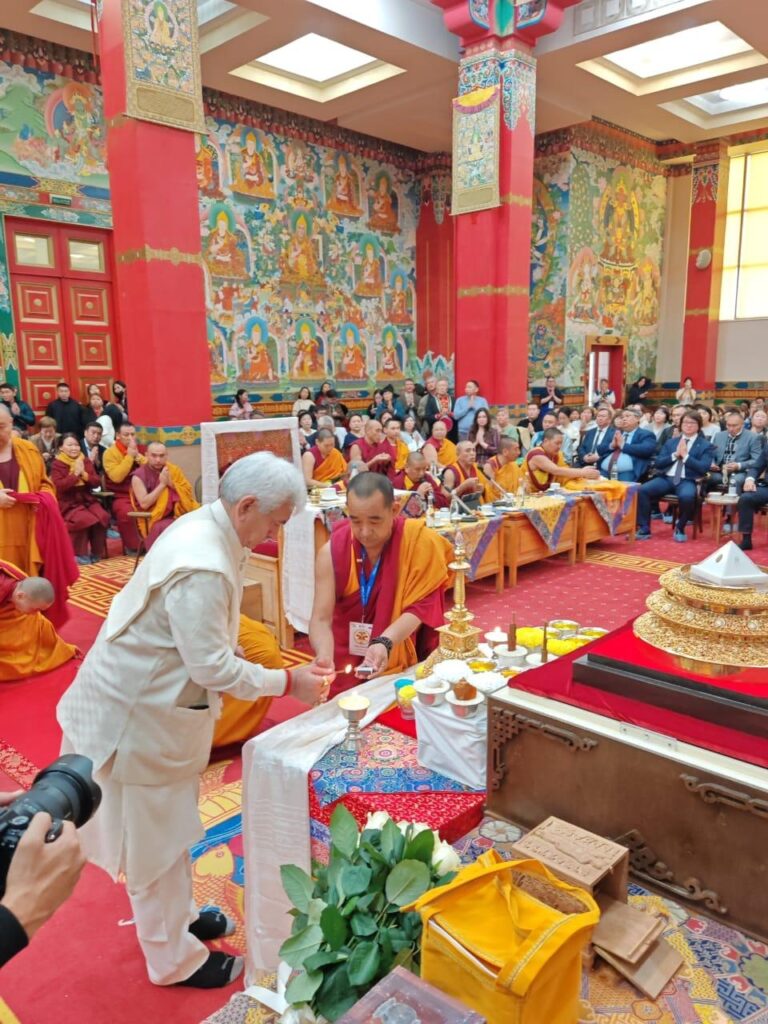
The Diplomatic Bridge
Beyond spiritual fulfillment, the exposition carried profound diplomatic undertones. India and Russia are about to celebrate eighty years of friendship, and events like this serve as powerful milestones in forging even stronger ties. Manoj Sinha’s visit was marked by meetings with Kalmykia’s First Deputy Chairman, Tserenov Erdni Nikolayevich, Deputy Chairman Dzhambinov Ochir Vladimirovich, and India’s Deputy Chief of Mission, Nikhilesh Giri.
The ceremony at the Central Temple in Elista, attended by senior monks and government officials, became a reflection of the commitment to foster mutual understanding, build trust, and create lasting connections “through shared spiritual experiences.” Sinha spoke of how Lord Buddha’s presence in Kalmykia would continue to nurture seekers and inspire awakening.
Lineage and legacy also surfaced: the exposition revived memories of Kushok Bakula Rinpoche, the Ladakhi monk and diplomat whose missionary efforts reignited Buddhism in vast Eurasian lands, including Mongolia and Russian republics like Kalmykia, Buryatia, and Tuva—a story seldom told but crucial to the region’s spiritual history.
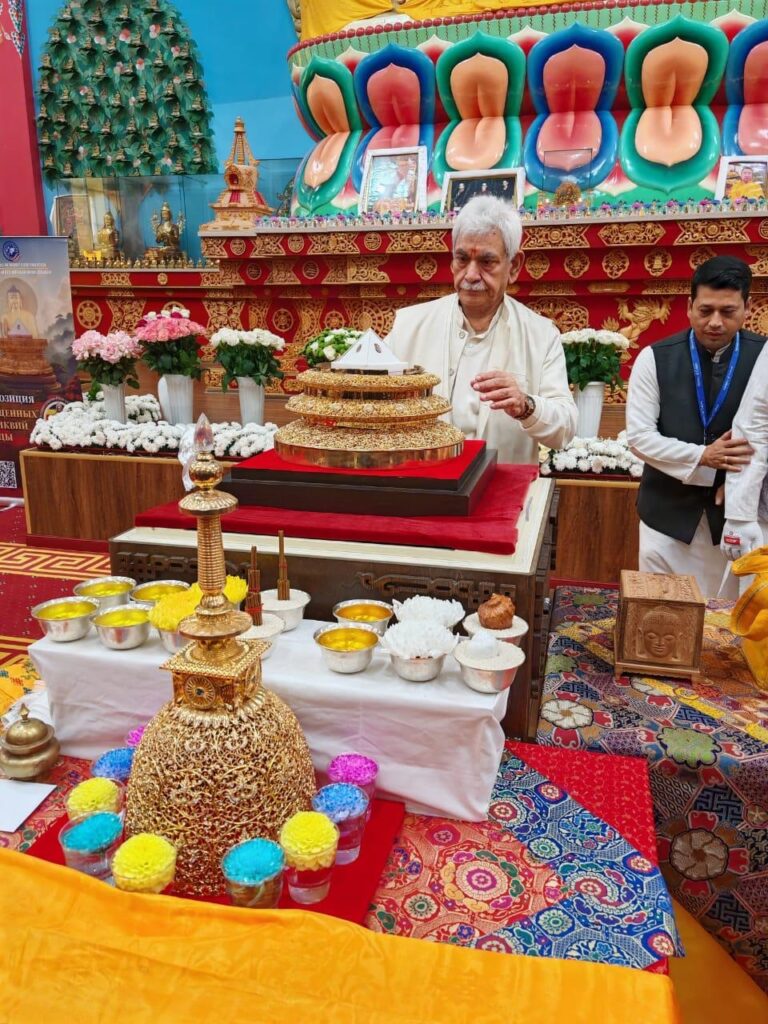
The Magnitude of the Exposition
The scale and symbolism of the event were both unprecedented. The relics, sacred to millions, made their first appearance in the Republic of Kalmykia—Europe’s only region where Buddhism is the predominant faith. Within the monastery’s golden halls, senior Indian monks held special services, and blessings were pronounced throughout the week over the assembled crowds.
This was not just a diplomatic gesture—it was a palpable celebration of shared Buddhist heritage, strengthening the deep-rooted people-to-people ties between India and Russia. The gifting of Buddhist artifacts and manuscripts, including Mongolian-language scripture (Kangyur volumes) to local Russian institutions, cemented the cultural exchange.
Nearly 100,000 devotees—monks, pilgrims, lay Buddhists, and the curious—filed through the monastery to offer prayers. The exposition also saw the signing of a Memorandum of Cooperation between Nalanda University in India and Kalmyk State University, opening new avenues of academic and cultural partnerships. Areas proposed for collaboration included Buddhist Studies, Sanskrit, Russian, Pali, research internships, and a joint encyclopedia project of Buddhist written heritage.
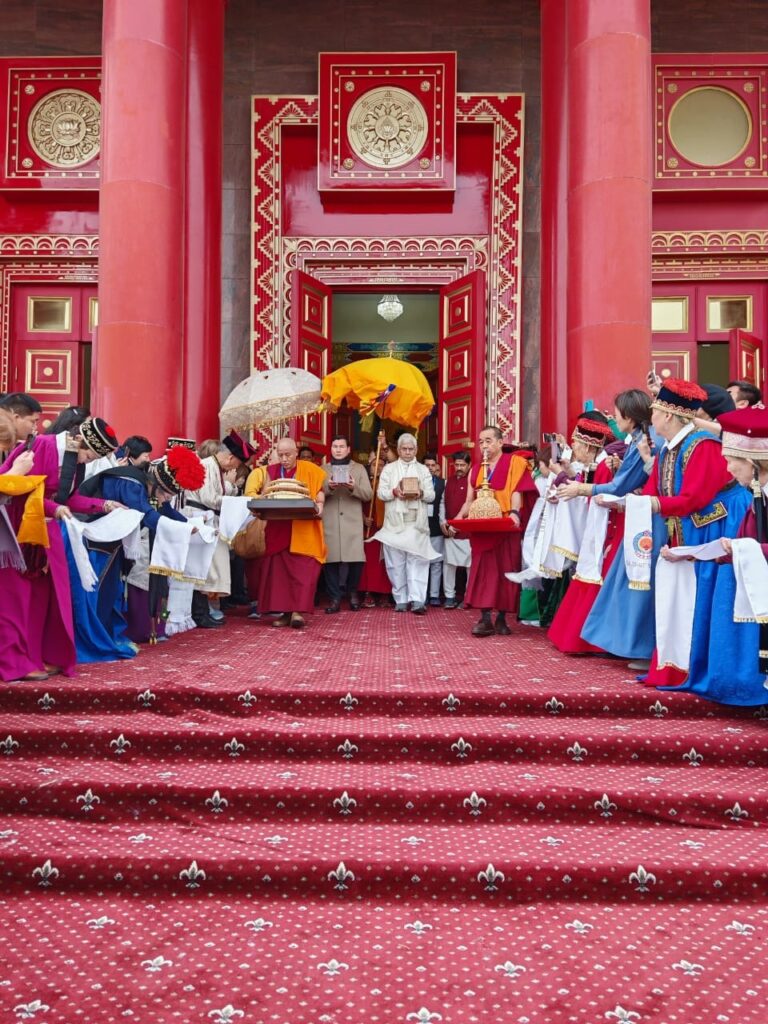
Building Spiritual and Cultural Bonds
Beyond numbers and ceremony, Sinha’s narrative was deeply human. He spoke of “building a world full of kindness, free of all discrimination, and in which humanity lives in harmony with nature.” The teachings of Buddha—rooted in compassion, wisdom, and introspection—formed the backbone of all reflections and speeches. Sinha called upon attendees to remember Buddha’s words, “Be a light unto yourself,” encouraging personal awakening and global responsibility.
The event’s success became a template for future Indo-Russian collaboration. Kalmyk University’s rector highlighted the institution’s ties to 23 countries and its hosting of 1,500 international students, including fifty Indians. For Nalanda University, the partnership reconnected ancient traditions of learning and dialogue dating back to the 5th century CE.
A Vision for Tomorrow
As Manoj Sinha led the delegation back to India, the return of the relics was described by many as “a symbol of peace and spiritual unity”—reinforcing not just the legacy of the Buddha, but the promise of closer bonds between nations spanning the spectrum from business and trade to defense and cultural cooperation. The PM’s intervention that had secured the relics from international auction earlier in 2025, and entrusted Sinha with the sacred duty, added another layer of resonance.
For local devotees and Indian diaspora, the event was a moment of joy and pride. For global observers, it showcased India’s commitment to using spiritual heritage as both a bridge and a balm in turbulent global times. For Kalmykia—and indeed Russia—it was a reminder of their unique Buddhist heritage, and the enduring influence of India’s philosophical treasures.
The Road Ahead
The successful return of the relics marked the conclusion of an exposition filled with blessings, historic memories, and visions for future cooperation. It deepened India and Russia’s spiritual and diplomatic bonds, highlighting the power of cultural diplomacy—even in an era dominated by geopolitics and economic agreements.
For Manoj Sinha and countless monks and devotees, the journey was more than official duty—it was a pilgrimage, a renewal, a return of light. As the holy relics now rest again in their home country, their brief sojourn in Russia will continue to illuminate the path for harmony, learning, and understanding between nations and cultures—a true legacy of the Buddha’s timeless message.
All facts and quotes are drawn from recent news reports, government releases, and coverage of the October 2025 Kalmykia exposition event.
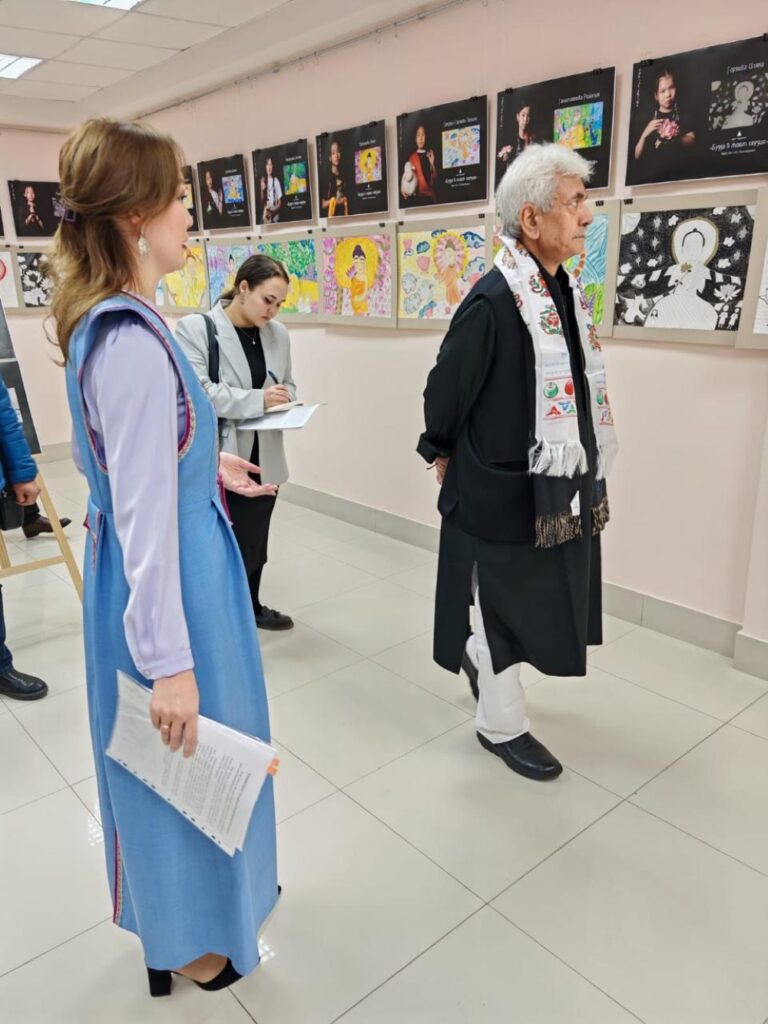
India-Russia Cultural Ties
- Cultural bonds trace back centuries, with vibrant exchanges visible even before India’s independence in 1947.
- Renowned Russian scholars like Nikitin and Roerich traveled to India, documenting Indian philosophy and culture, while Indian traders settled in Astrakhan, Russia.
- Literature, music, dance (such as Kathak, Odissi, Bharatanatyam), Indian languages, and cinema are popular interests in Russia. Russian writers like Tolstoy and Pushkin influenced Indian thinkers, and generations of Russians have grown up watching Indian films.
- Yoga, introduced widely since the 1980s, enjoys consistent popularity in Russian urban centers.
- Institutions like the Jawaharlal Nehru Cultural Centre in Moscow and bilateral protocols like regular cultural festivals have institutionalized ongoing exchanges, with events and artist delegations alternating between the two nations.
- Collaboration extends to higher education, art exhibitions, and joint film production.
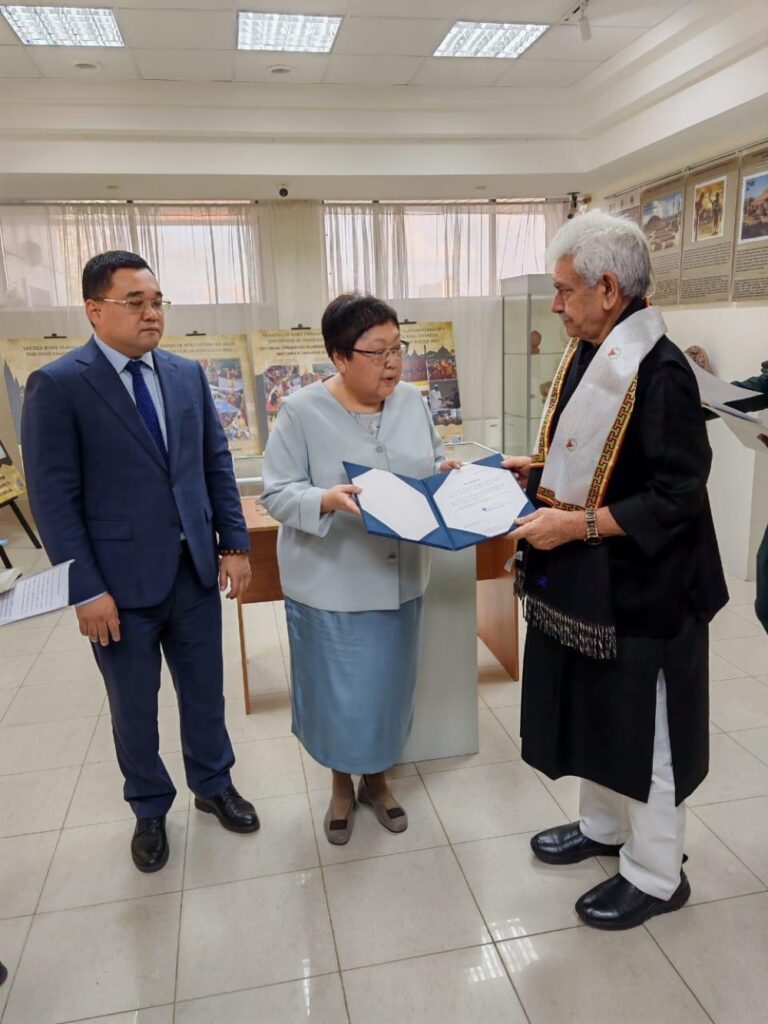
Past Religious Exchanges
- Historical religious links go back centuries. Buddhism spread from India along the Silk Road through Central Asia (Tibet, Mongolia) to Russian regions such as Kalmykia, Buryatia, and Tuva. Migration and missionary work helped establish Buddhist communities, now over a million practitioners strong in Russia.
- In contemporary times, Buddhism remains Russia’s third-largest religion, and events like the 2025 exposition of Buddha relics in Kalmykia, led by Indian dignitaries, underscore active religious diplomacy and shared reverence.
- Russian interest in Hinduism has ancient roots too; prior to Christianization, Slavic Aryan beliefs shared similarities with Hindu practices. Today, a growing segment of Russians explore Indian philosophies, meditation, and yoga.
- During the Soviet era, despite periods of suppression, Buddhist and Hindu societies went underground, reviving dramatically with eased religious restrictions after the 1990s.
- Recent religious exchanges include the repatriation of Buddhist relics, collaborative Buddhist studies, and regular pilgrimages and cultural diplomacy around Buddhist sites and artifacts.
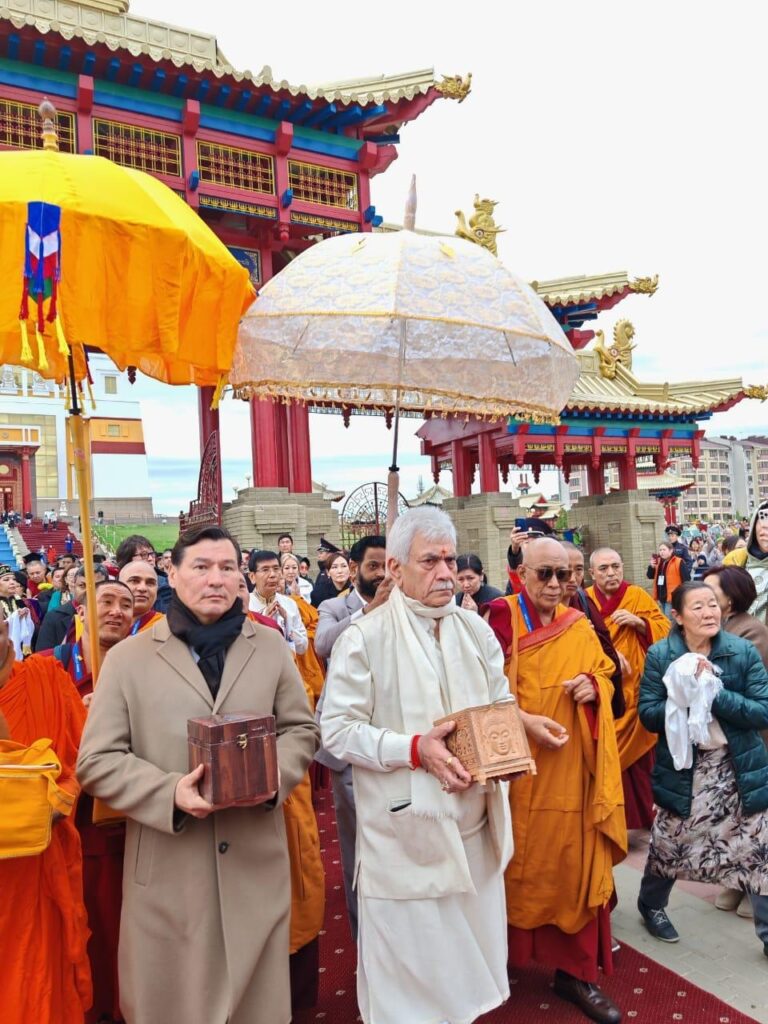
Key Recent Cultural Agreements
- In October 2025, Nalanda University (India) and Kalmyk State University (Russia) signed a Memorandum of Cooperation. This pivotal agreement promotes student and faculty exchanges, joint research projects, and multicultural academic events with a focus on Buddhist studies, Indian languages, Russian language, healthcare, and the creation of a joint encyclopedia on Buddhist heritage.
- The Central Spiritual Administration of Buddhists of Kalmykia and the International Buddhist Confederation signed an MoU in October 2025, formalizing collaboration on spiritual education, preservation of Buddhist relics, and regular cultural-religious activities.
- The implementation of the Cultural Exchange Programme (2021-2024) between the Russian Ministry of Culture and India’s Ministry of Culture continued, supporting reciprocal film festivals, folk art events, library and museum collaborations, youth exchanges, and artist delegations.
- Bilateral intergovernmental dialogues such as the India-Russia Joint Working Group (JWG) on Culture met in St. Petersburg in September 2024, leading to agreements on mutual recognition of diplomas and further expansion of academic cooperation.
Prominent Joint Programs (2024-2025)
- “Days of Indian Culture” in Russia and “Festival of Russian Culture” in India held annually in multiple cities, expanding youth and folk art participation.
- A major Buddha relics exhibition in Kalmykia, Russia, brought together nearly 100,000 devotees, showcased spiritual diplomacy, and included week-long workshops and religious events led by senior Indian monks.
- India Days in Kalmykia introduced master classes, cultural tourism initiatives, healthcare collaborations, language learning, and Buddhist scholarship programs to foster deeper engagement.
- Russian Centres of Science and Culture (RCSC), active in five Indian cities, run regular workshops, performances, and language programs.
- Members of Indian delegations participated in the Sochi World Youth Festival (March 2024) and the BRICS Games in Kazan (June 2024), enhancing sports and youth ties.
- Ongoing literary and artistic exchanges, joint film and music productions, and bilingual publications support continued cross-cultural learning in literature and performing arts.
India and Russia’s recent cultural agreements and programs demonstrate a robust, forward-looking strategy, leveraging soft power to support harmony, knowledge-sharing, and people-to-people connectivity in the 21st century.
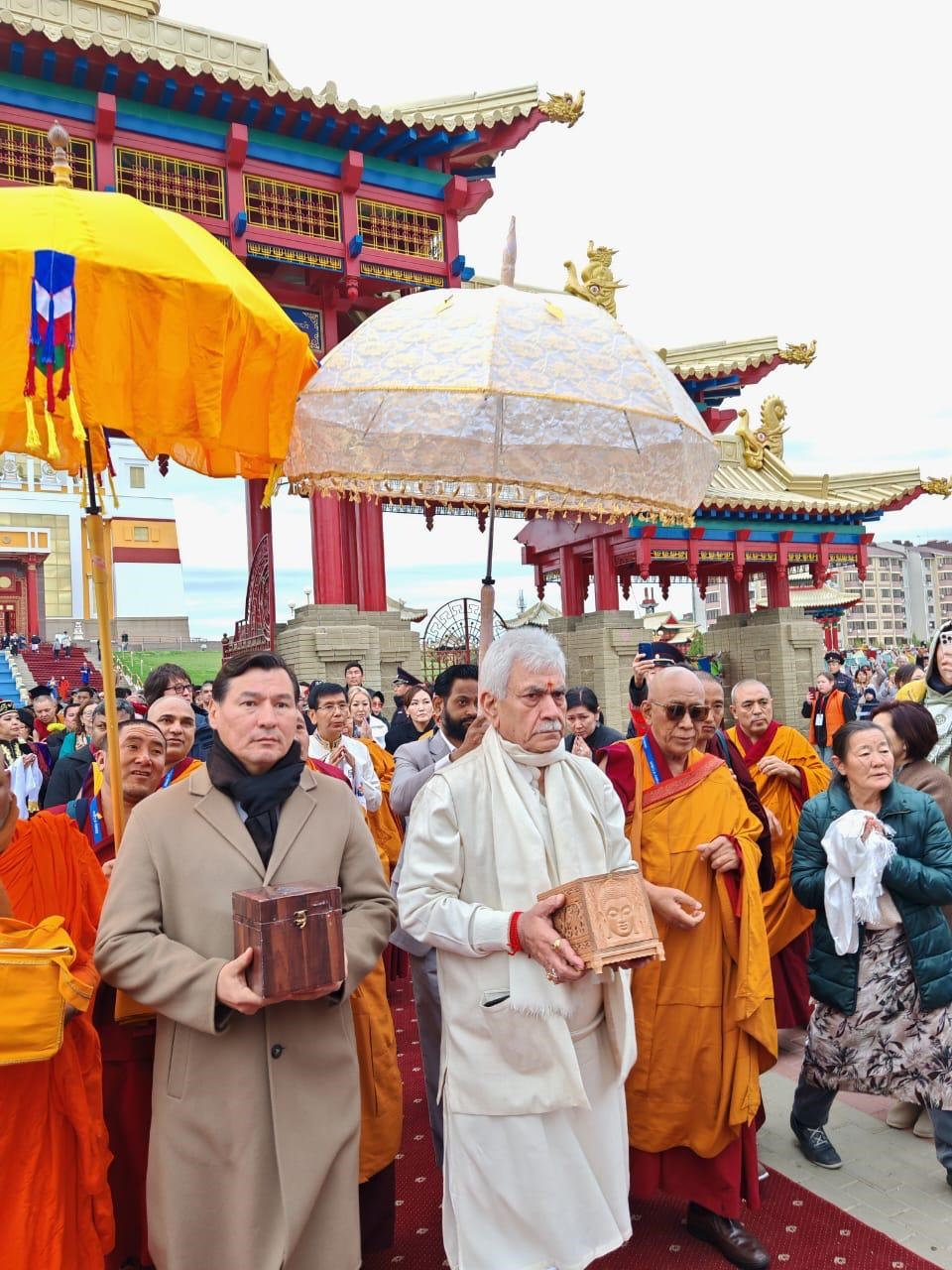

Leave a Reply